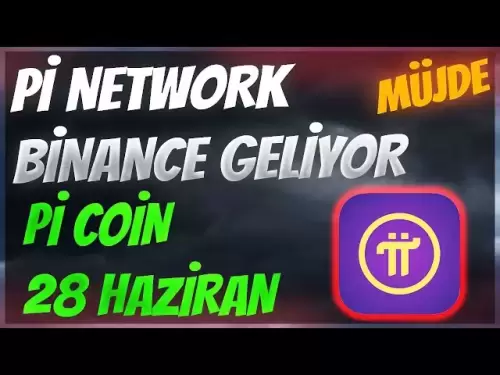 |
|
 |
|
 |
|
 |
|
 |
|
 |
|
 |
|
 |
|
 |
|
 |
|
 |
|
 |
|
 |
|
 |
|
 |
|
Articles d’actualité sur les crypto-monnaies
Scaling Audio Transcription with Google Vertex AI and Gemini Models
Apr 30, 2025 at 04:13 am
This article is co-authored by Ugo Pradère and David Haüet
How hard can it be to transcribe an interview ? You feed the audio to an AI model, wait a few minutes, and boom: perfect transcript, right ? Well… not quite.
When it comes to accurately transcribe long audio interviews, even more when the spoken language is not English, things get a lot more complicated. You need high quality transcription with reliable speaker identification, precise timestamps, and all that at an affordable price. Not so simple after all.
In this article, we take you behind the scenes of our journey to build a scalable and production-ready transcription pipeline using Google’s Vertex AI and Gemini models. From unexpected model limitations to budget evaluation and timestamp drift disasters, we’ll walk you through the real challenges, and how we solved them.
Whether you are building your own Audio Processing tool or just curious about what happens “under the hood” of a robust transcription system using a multimodal model, you will find practical insights, clever workarounds, and lessons learned that should be worth your time.
Context of the project and constraints
At the beginning of 2025, we started an interview transcription project with a clear goal : to build a system capable of transcribing interviews in French, typically involving a journalist and a guest, but not restricted to this situation, and lasting from a few minutes to over an hour. The final output was expected to be just a raw transcript but had to reflect the natural spoken dialogue written in a “book-like” dialogue, ensuring both a faithful transcription of the original audio content and a good readability.
Before diving into development, we conducted a short market review of existing solutions, but the outcomes were never satisfactory : the quality was often disappointing, the pricing definitely too high for an intensive usage, and in most cases, both at once. At that point, we realized a custom pipeline would be necessary.
Because our organization is engaged in the Google ecosystem, we were required to use Google Vertex AI services. Google Vertex AI offers a variety of Speech-to-Text (S2T) models for audio transcription, including specialized ones such as “Chirp,” “Latestlong,” or “Phone call,” whose names already hint at their intended use cases. However, producing a complete transcription of an interview that combines high accuracy, speaker diarization, and precise timestamping, especially for long recordings, remains a real technical and operational challenge.
First attempts and limitations
We initiated our project by evaluating all those models on our use case. However, after extensive testing, we came quickly to the following conclusion : no Vertex AI service fully meets the complete set of requirements and will allow us to achieve our goal in a simple and effective manner. There was always at least one missing specification, usually on timestamping or diarization.
The terrible Google documentation, this must be said, cost us a significant amount of time during this preliminary research. This prompted us to ask Google for a meeting with a Google Cloud Machine Learning Specialist to try and find a solution to our problem. After a quick video call, our discussion with the Google rep quickly confirmed our conclusions : what we aimed to achieve was not as simple as it seemed at first. The entire set of requirements could not be fulfilled by a single Google service and a custom implementation of a VertexAI S2T service had to be developed.
We presented our preliminary work and decided to continue exploring two strategies :
In parallel of these investigations, we also had to consider the financial aspect. The tool would be used for hundreds of hours of transcription per month. Unlike text, which is generally cheap enough not to have to think about it, audio can be quite costly. We therefore included this parameter from the beginning of our exploration to avoid ending up with a solution that worked but was too expensive to be exploited in production.
Deep dive into transcription with Chirp2
We began with a deeper investigation of the Chirp2 model since it is considered as the “best in class” Google S2T service. A straightforward application of the documentation provided the expected result. The model turned out to be quite effective, offering good transcription with word-by-word timestamping according to the following output in json format:
However, a new requirement came along the project added by the operational team : the transcription must be as faithful as possible to the original audio content and include small filler words, interjections, onomatopoeia or even mumbling that can add meaning to a conversation, and typically come from the non-speaking participant either at the same time or toward the end of a sentence of the speaking one. We’re talking about words like “oui oui,” “en effet” but also simple expressions like (hmm, ah, etc.), so typical of the French language! It’s actually not uncommon to validate or, more rarely, oppose someone point with a simple “Hmm Hmm”. Upon analyzing Chirp with transcription, we noticed that while some of these small words were present, a
Clause de non-responsabilité:info@kdj.com
Les informations fournies ne constituent pas des conseils commerciaux. kdj.com n’assume aucune responsabilité pour les investissements effectués sur la base des informations fournies dans cet article. Les crypto-monnaies sont très volatiles et il est fortement recommandé d’investir avec prudence après une recherche approfondie!
Si vous pensez que le contenu utilisé sur ce site Web porte atteinte à vos droits d’auteur, veuillez nous contacter immédiatement (info@kdj.com) et nous le supprimerons dans les plus brefs délais.
-

- 21Shares dépose un formulaire 19B-4 avec la SEC pour lancer un Fonds de bourse (ETF) de la SEC (DOGE) (ETF)
- Jun 15, 2025 at 04:50 am
- Dans un développement significatif, le NASDAQ a soumis un formulaire 19B-4 à la Commission américaine des Securities and Exchange (SEC). Le Fonds de bourse (ETF) 21Shares DoGECOIN (DOGE) est présenté par le biais de ce dossier pour l'approbation de la SEC pour obtenir le statut d'inscription.
-

- The Royal Canadian Mint earns global industry recognition for a double-sided Extraordinarily High Relief pure silver coin celebrating the Year of the Dragon and its collaboration with McGill University on a more environement
- Jun 15, 2025 at 04:50 am
- The Royal Canadian Mint is delighted to have twice earned global recognition for its coin manufacturing execellence and innovation by winning the Best Commemorative Silver Coin and the Best Collaboration coin awards of the 2025 Mint Directors Conference (MDC).
-

-

-

-

- BlockDAG Brings in Special Price of $0.0019; Triggers Buying Spree as Polygon Signals Rally & PEPE Price Eyes $0.001
- Jun 15, 2025 at 04:40 am
- Things are heating up for Polygon as recent charts point to a possible shift in momentum; a recent Polygon analysis suggests POL might be ready to push past key resistance. Over in the meme coin lane, PEPE price action is grabbing attention again as it climbs with volume and whale support.
-

-

-































































